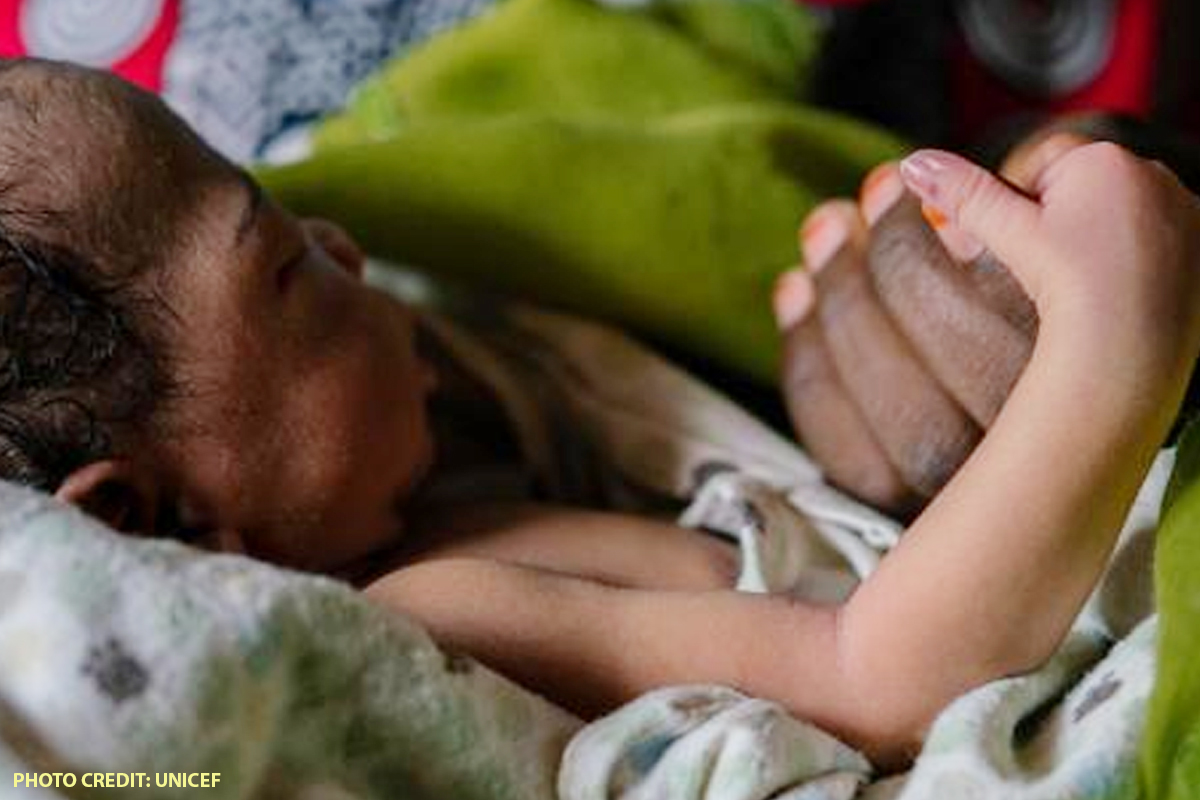ENDING PREVENTABLE DEATHS OF NEWBORNS SIGNIFICANTLY OFF TRACK, SAYS UNICEF
MOST countries will not be able to meet their sustainable development goals in preventing deaths of newborns and children under five, a report of the United Nations Inter-Agency Group for Child Mortality Estimation said.
UN-IGME said that more than 50 countries will not meet the under-five mortality target by 2030, and more than 60 countries will miss the neonatal mortality target without immediate action.
The SDGs call for an end to preventable deaths of newborns and children under age five – with all countries aiming to have a neonatal mortality rate of 12 or fewer deaths per 1,000 live births, as well as under-five mortality rate of 25 or fewer deaths per 1,000 live births by 2030.
However, the report said that more than five million children died before their fifth birthday in 2020 alone, along with 2.2 million children and youth aged 5 to 24.
“We are still losing too many young lives from largely preventable causes, often because of weak and underfunded health systems which have faced enormous pressure over the pandemic. And the burden of these deaths is not carried equally around the world,” Mark Hereward, UNICEF’s Associate Director on Data and Analytics, said.
“If we are going to achieve the child mortality SDGs in all countries, we must redouble efforts to ensure access to effective and high-quality care along with the continued expansion of coverage of life-saving interventions,” he added.
Moreover, the UN-IGME report stated that recent and reliable data on child, adolescent and youth mortality remains unavailable for most countries of the world, particularly for low-income countries.
Citing that 97 out of 135 countries have no reliable mortality data in the past three years, the UN report also noted that outcomes for children and adolescents in 2021 and beyond remain unknown.
“Countries must invest in quality health services, nutrition, and other life-saving interventions for women and children to ensure the hard-won gains in combating child mortality are not lost and to meet the SDGs,” Feng Zhao, Practice Manager for the Health, Nutrition and Population Global Practice of the World Bank, said.
“The World Bank continues to be committed to helping low- and middle- income countries improve health outcomes for women and children and accelerate reductions in child mortality, including through partnerships like the Global Financing Facility,” he pointed out.














